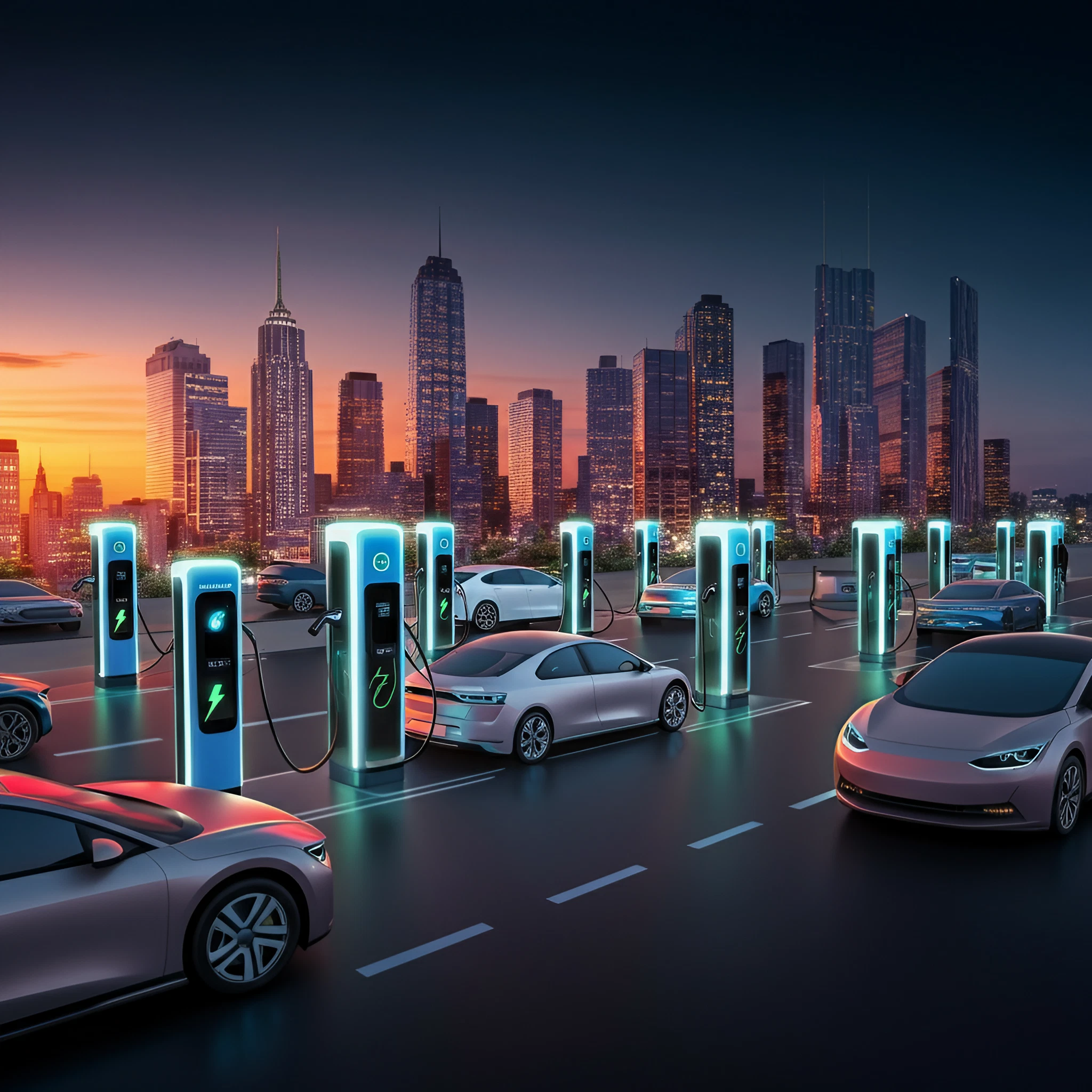Electric Vehicles (EVs) have taken the automotive world by storm, promising cleaner transportation and a significant reduction in carbon emissions. However, the widespread adoption of EVs would not be possible without robust EV charging infrastructure companies developing and maintaining the backbone of this shift. This article explores the leaders in the industry, the role of government policies, challenges companies are solving, and the bright future of EV charging technology.
Leading EV Charging Infrastructure Companies
A few companies stand out in spearheading the charge toward a more electrified world:
1. Tesla
Tesla’s Supercharger network is one of the most advanced charging infrastructures globally. With over 45,000 Superchargers worldwide, Tesla’s network is known for reliability and speed. Its V3 Supercharger technology can add up to 200 miles of range in just 15 minutes. Tesla continues to innovate by increasing charger availability for non-Tesla vehicles, expanding the EV ecosystem.
2. ChargePoint
ChargePoint operates one of the largest public and private EV charging networks in North America and Europe, focusing on flexibility and accessibility. With solutions for homes, workplaces, and shared public spaces, ChargePoint combines convenience with sustainable energy use.
3. EVgo
EVgo provides high-speed charging solutions with zero-emission electricity. Its fast chargers are helping address urban and highway charging needs, reducing ‘range anxiety’ for EV users. EVgo also prioritizes partnerships with retail locations, creating a unique value proposition for consumers.
These companies play critical roles in making EV charging both commonplace and user-friendly for businesses and individuals alike.
Government Policies Shaping the Industry
EV infrastructure development often depends on governmental support. Policies like tax incentives, grants, and clean energy initiatives directly impact the growth of EV chargers:
- The Inflation Reduction Act (2024): This U.S. legislation provides significant funding for expanding public and private EV charging networks.
- European Green Deal: This EU initiative has highly ambitious targets for EV adoption, propelling massive investment in infrastructure.
- Global Policies: Countries like China and Norway lead the way with aggressive EV adoption incentives, driving demand for robust charging networks.
However, shifting political attitudes can also hinder progress. For example, reports of federal EV charging shutdowns in the U.S. highlight how changing administrations can disrupt infrastructure investments, as noted by Engadget.
Tackling Challenges in EV Charging Infrastructure
EV charging infrastructure companies face numerous challenges as they scale operations, including:
- Charging Speed
Companies are optimizing fast-charging technology with innovations like Tesla’s V3 Supercharger and EVgo’s direct current fast charging (DCFC). These technologies aim to reduce wait times, paving the way for an EV-dominant future.
- Accessibility
Businesses like ChargePoint are expanding their networks in urban centers, workplaces, and rural areas to ensure accessible charging facilities for diverse populations.
- Grid Capacity & Energy Demand
The transition to EVs requires massive upgrades in energy grids. Intelligent load management and renewable energy integration are becoming essential strategies for companies to manage demand peaks and prevent grid overload.
Financial Incentives for Building Infrastructure
Building EV charging stations involves significant investment. Governments and private investors often help with grants, partnerships, and tax benefits. Programs like California’s Clean Vehicle Rebate Project (CVRP) and Europe’s Connecting Europe Facility help fund charging station deployments, enabling widespread EV adoption.
Private capital also plays a crucial role. Investors are increasingly interested in funding EV charging infrastructure due to its high-growth potential, especially as EV adoption accelerates globally.
Future Trends in EV Charging Technology
The future of EV charging is brimming with exciting innovations that promise faster, more efficient, and user-friendly processes, including:
- Wireless Charging
Wireless, or inductive, charging is under development, allowing EVs to charge seamlessly without physical plugs. Companies like WiTricity are leading the charge in this space.
- Ultra-High-Speed Chargers
With speeds up to 350 kW, ultra-high-speed chargers are expected to become the new standard, reducing recharge times to under 10 minutes.
- Vehicle-to-Grid (V2G) Integration
V2G technology enables vehicles to return surplus electricity to the grid, helping balance energy distribution. This innovation offers potential savings for consumers and benefits for grid operators.
- Solar-Powered Chargers
Solar-integrated charging stations are beginning to emerge, offering sustainability by reducing dependence on the grid and utilizing clean energy.
Promoting EV Adoption Through Infrastructure Development
The efforts of EV charging infrastructure companies go beyond logistics and technology. They play a vital role in making the EV lifestyle more accessible and appealing. By addressing concerns over charging availability, convenience, and speed, companies like Tesla, ChargePoint, and EVgo are critical in dispelling common doubts and encouraging both businesses and consumers to switch to electric.
Final Thoughts
EV charging infrastructure companies are at the forefront of a new era in sustainable transportation. Whether you’re an EV enthusiast, a policymaker shaping the future of clean energy, or an investor exploring high-growth opportunities, these businesses represent the confluence of innovation, sustainability, and economic opportunity.
By aligning innovation with demand and addressing challenges head-on, these companies will not only drive global adoption but also redefine how we interact with energy and transportation.
Get involved in the electrification narrative and watch how these companies drive transformation—for today and tomorrow.








